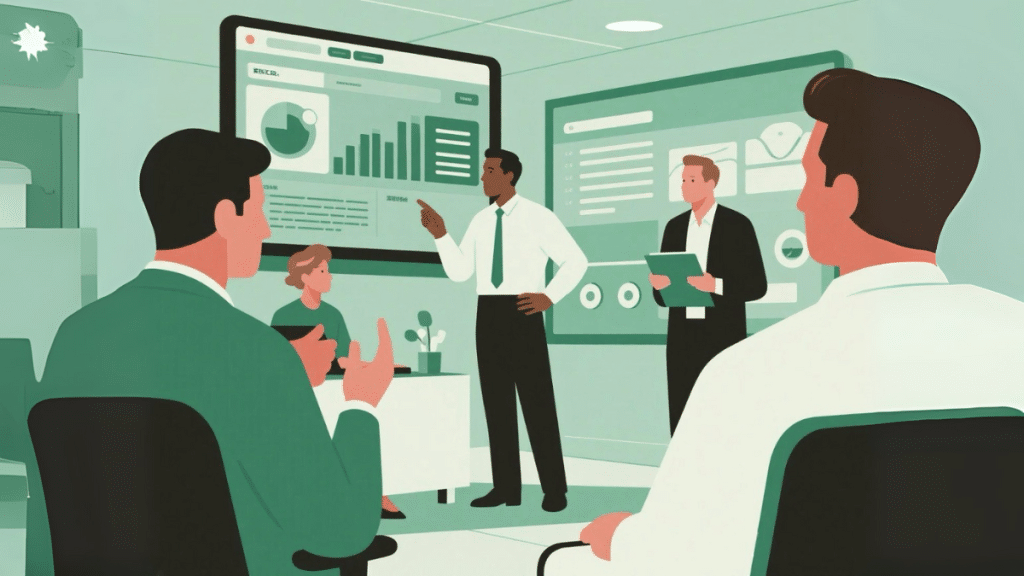Most people think deriving a PowerPoint presentation is just a matter of putting in a couple of slides, writing stuff, and just placing images- and voila! Anyone can do it. However much effort it takes to come up with an effective, unforgettable, appealing presentation, it is more than that.
This post will take you by the hand through some workable tricks to better your next PowerPoint presentation, and some inspiring ideas as well. These tips will help you to make an impression whether you are going to a class presentation or a meeting presentation, and you wish to share a sparked idea.
We will also look at how AI tools are currently enabling you to design smarter and quicker than ever, and that you do not need to be a design professional.
Why PowerPoint Presentations Still Matter
Living in the era of glitchy music videos, TikToks that are faster than lightning, and much-edited images and videos, you may deem the slideshow as a relic. This is, however, not the case.
PowerPoint is still one of the most popular tools used in the classroom, boardroom and in conferences across the globe. Here’s why:
- It is accessible and straightforward to use.
- It favors images and words.
- It enables structural storytelling.
- You can use it both in live and own record presentations.
Nevertheless, your presentation must be of good quality as much as the content. Someone with an amateur presentation may lose the interest of their audience when he is covering an awesome topic.
We shall talk about how to protect against it.
The Basics of a Great PowerPoint Presentation
It is important to know the basis of a good show before getting into the creative notions. These are some of the essentials, not so complicated:
Keep Simple
Text-filled slides leave your audience confused. Avoid putting too much text on the slide, and present only 1 concept or idea on a slide.
Wise Usage of Visuals
Indicate the use of good icons, infographics, and pictures to back the message. Ensure your slides aren’t overloaded with too many visuals simultaneously.
Select Clear Fonts
Use simple fonts such as Arial, Calibri or Helvetica. It is preferable not to use fonts like cursive text or accompanying body text.
Keep a Uniform Style
Similarize the quantity of fonts, colors, and slide design in your presentation. This gives your presentation a clean, professional-looking style.
Give a Story
Consider your presentation as a trip. Describe the problem, elaborate your ideas, and make a final statement or a point of action.
Making Slides Faster and Smarter with AI
Slide design may consume so much time. This is where AI presentation tools enter the stage. They save your time, decrease the level of stress, and allow you to make a professional-quality presentation within a short period.
As an example, smallppt is an AI-powered service that allows creating full presentations depending on your data. All you do is give a subject or concept, and the tool can recommend slides, designs, and even material.
Examples of what AI tools, such as smallppt, can assist you with are as follows:
- Automatic slide format/design
- Suggest that participating texts create professional themes and color schemes
- Translate slide shows into other languages
- Preserve templates to be used again
These intelligent tools are particularly effective for:
- Non-designers who desire beautiful-looking slides
- Busy working professionals in Florida
- Students who would like to refine their schoolwork
- Online educational app developers
Common PowerPoint Mistakes to Avoid
Some pitfalls will make your presentation weaker, even in spite of the right tools and ideas. Overstating is one of the most common problems because slides are not expected to reiterate the script you are reading off-screen: they are supposed to help you make some notes. The other is excess in animations and transitions, which may distract rather than add effect.
The photos you use should not be of poor quality because this kills professionalism. And watch out for erratic design, either in fonts, colors, or layouts; this will give your sliders a shoddy appearance. Finally, read in front of your slides, but don’t present the song by wording; it will only make your audience fall asleep.
When and when NOT to use PowerPoint
Using PowerPoint is wonderful, but it is not the right decision in every case. Consider your audience and context. The following are some of the good and bad times when it may be used:
Best times to use PowerPoint:
- Business presentations or meetings
- University or school assignments
- Training or workshops
- Product demos
- Webinars or classes online
When to skip PowerPoint:
- Over-the-desk team chats
- Brief reports (perhaps email is better)
- Face-to-face interaction
- imaginative thinking (a whiteboard might be more beneficial)
Helpful Resources and Final Thoughts
Designing a more effective presentation does not mean doing it with fancy tricks, but stating your message convincingly.
Choose an effective plan, adhere to the best practices, experiment a bit, and use valuable tools such as AI presentation makers to save efforts and time.
Need a greater inspiration? Make sure to visit this collection of 30 slide ideas and put some tools, which can be found at smallppt, into practice to provide your slides with a head start.
And whether it is a 5-minute or 50-minute talk, you just keep this reminder, it takes no time to make a great presentation, but it doesn’t have to be complex. Be thoughtful, be inventive, and be business-driven.
Got a presentation coming? Breathe in, open your slide editor, and begin to create something wonderful. You can do this!
